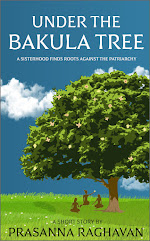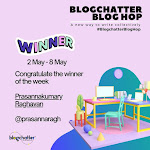Genres in Fiction-part1- the elements of mystery novels and 6 steps to remember when writing them.
This is my first post in Blog Chatters Half Marathon 2023. Among the prompts the team leaders suggested for this challenge, I accepted a few for the posts and, for the rest, made my own choices. In this post, I start introducing the popular genres in Fiction, such as mystery novels, crime novels and thrillers. Then, I explain the general structure of mystery novels and 6 steps to keep in mind when writing them.
Genres in Fiction.
This is not a post from an expert's point of view but a learner's. In the Blog Chatter's Insta Reel challenges last month, I revealed the cover page for my upcoming book Girl in the Shack. It is a murder story starting with a crime, getting along with mystery and suspense. Then, I got a question: Which fiction genre does it feature?
I began reading about the fiction genres to clarify the above doubts and what I have encountered. I will summarise in this post, starting with the mystery genre.
While the popular genres of Fiction- mystery novels, crime novels, and thrillers- are closely related, one is not synonymous with the other. "Each has its own idiomatic characteristic and attracts a specific audience," according to Master Class.
In this post, I will address mystery novels. Here, I look into their characteristic structure and the six steps to remember when writing one.
What is the mystery genre?
According to MasterClass, a mystery is a genre in literature that follows a crime, such as a murder or a disappearance. The genre follows the crime from the time of the murder to the time it was resolved.
Mystery novels are often called 'whodunnits'. It turns the reader to the detective trying to figure out who, when, what and how the crime was committed. Mysteries turn the detective or the private eye following the crime, the main character.
The structure of a mystery novel
Generally, most mysteries have a general structure.
1. A crime- The readers are introduced to the crime around which the story progresses.
2. Investigation.
- The detective works on solving the crime.
- They question each suspect.
- Search for clues.
- Follow new leads in hopes of finding the guilty party.
3. Twist.
- The detective finds a new clue or an unexpected lead,
- a crack in the alibi- that shocks them and the reader,
- and changes the course of the investigation.
4. Breakthrough
- The detective uncovers the last remaining piece of the puzzle and solves the mystery
5. The culprit is caught, and all the outstanding questions are resolved.
6 steps to keep in mind when writing a mystery novel.
1. Start with an exciting hook.
- From the first step or the first sentence, the reader is interested immediately and makes them want more.
2. Set a mysterious mood.
- Set the readers in the action and encourage them to keep reading.
- Without a mysterious air, even the most shocking plot twist falls flat.
- With that mood setting, you put your readers into the world of your novel.
And how?
- A dark setting, such as an abandoned building or an isolated cabin in the woods,
- The descriptive language of the chilling details of the case,
- Suspenseful dialogue.
3. Reveal information slowly.
- Create an element of surprise by controlling how much information you reveal, how and when.
- The main storyline is built on a smaller amount that sustains the readers' interest.
4. Leave clues behind.
- Let the reader feel they're part of the story.
- Drop clues throughout the novel that let them be active participants in solving the mystery.
- They should be subtle, but discovering and thinking through them feel exciting and satisfying for the reader.
5. Provide a few red herrings
- The best mysteries are the ones readers cannot solve straight away.
- Divert the readers' attention with details about people, places and objects that may not be true and misguide them with contradicting evidence.
- When they finally learn the truth, they feel satisfied.
6. Tie up the loose ends.
- Mysteries do not end with cliffhangers.
- You should solve the crime.
- Explain the mysterious disappearance or reveal the murder.
- The ending doesn't have to be happy, but it should reveal all the outstanding questions the reader has about what happened and what the outcome meant for all the characters involved.








4 comments
My heart goes to mystery novels when it comes to reading but when It comes to writing I dont know why I am inclined to write centering social issues. I am still wondering about this,
ReplyDeleteThank you. What a varied attitude of the same personality. Perhaps our mind is functioning differently when it comes to reading and writing. I am also very much inclined to social issues. Also having a fascination to dwell upon other genres and to search into its various aspects.
ReplyDelete👍
ReplyDeleteThank you :)
DeletePost a Comment